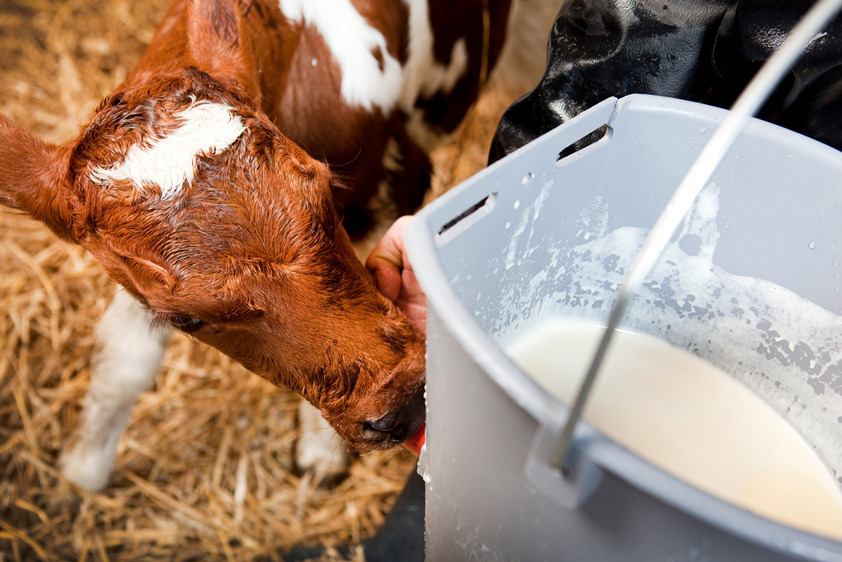Heifer management: Precision feeding in 2015

The take home message and overall theme behind Alltech’s on-farm webinar, “Precision Feeding Dairy Heifers” presented by Jud Heinrichs, Penn State University was that heifers need to be managed better. Focus should be on meeting animal requirements and feed efficiency. He also provides seven goals for 2015 in order to help achieve this.
Within the past 50 years, dairy producers have made impressive advances in their approach to feeding cows, producing and maintaining quality forage, providing housing, managing animal health and milking. However, all of these alterations were made with the lactating cow in mind, leaving the heifer herd short-changed.
“On the animal nutrition side, we have seen many farms focused on the lactating cow—the money maker, on those same farms, we are managing and feeding heifers the same way we did in 1965,” says Heinrichs.
By examining basic animal physiology and meeting animal requirements and feed efficiency principles, Heinrichs believes dairies can provide heifers with the correct diet for their stage of growth and do it cheaper than traditional practices.
Seven goals for 2015 dairy replacements
- Calf mortality should be less than 5%, 2% is best
- Calves should grow on milk and/or milk replacer. They should double birth weight at 80 to 90 days.
- The age for first heat needs to be older than 11 months.
- The age for breeding should be set at 13- 14 months.
- For calving, the accepted age is now 22 to 24 months, or an average of 23 months.
- The heifer’s weight at breeding must be 55% of mature body weight.
- The heifer’s weight at calving should be 85 to 90% of mature body weight.
Measuring heifer growth
Heinrichs recommends producers determine the herd’s ration for average daily gain (ADG) from calving to breeding. To determine the ADG she must achieve by pregnancy, take mature weight minus today’s weight and divide by 282. Weight tapes can also be used and provide reasonably accurate results if done by same person each time.
He also suggests producers keep a customised heifer growth chart. The growth chart allows the producer to enter herd mature body weight and height, average birth weight of calves, average heifer services per conception and goal of age at calving.
The industry has also put a focus on the nutrient requirements since 2007 for heifers. Nutritionists now recognise longer rumen retention yields higher digestibility and digestibility is reduced as intake is increased. A different concept in dairy heifer feeding, producers offer less than ad libitum feeding and instead concentrate on providing highly digestible/high quality diets.
Producers should focus on forage quality and feed efficiency
The dairy professor encourages producers to focus on forage quality and feed efficiency. Feed efficiency is measured by how many kilograms of dry matter it takes to get a kilogram of average daily gain and is improved when feed is more highly digested. Lower intakes allow for more feed digestion in the rumen, and less dry matter being digested reduces maintenance energy needed to digest food.
“The dry matter intake of precision fed heifers is substantially lower than traditionally thought, but we are getting more nutrients out of it,” Heinrichs said. “We have learned where her nutrient requirements need to be for average daily gain before puberty and after.”
In addition to feed efficiency, Heinrichs suggests increasing forage NDF and diet digestibility, stimulating rumen function and microbial digestion, upholding an adequate environment (excess heat or cold increases ME requirements) and maintaining optimal health and management.
Meeting the heifers nutritional requirements
“When we are milking cows in 2015, we rely on nutritionists and ration balance programmes to put nutrients in the animals’ feed. We need to do the same with heifers,” Heinrichs said. “We can’t just put feed in front of her and not know if we are meeting her requirements. A precision fed heifer is one that is not ad lib fed because we’ve already met her nutrient requirements.”
Heinrichs will be a featured speaker during Dairy: Today’s Greatest Business Opportunity, part of the Alltech REBELation event exploring innovation, inspiration and world-changing ideas in Lexington, Ky., USA, from May 17-20. For more information and to register, visit the Alltech website.
Source: Alltech











